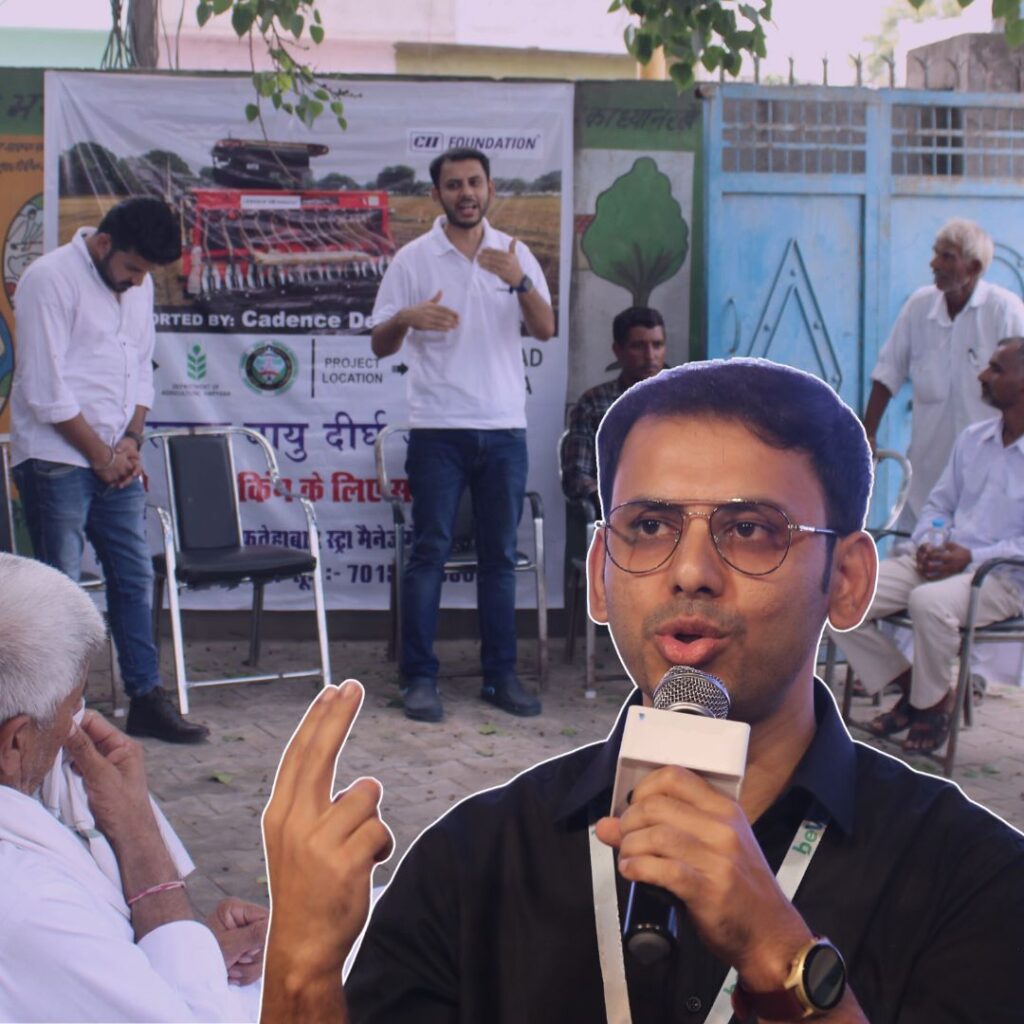March 14th, 2018 / 2:28 PM
Image Credits:Dr. Mahesh Sharma,Plant Village
“Since, the introduction of Bt cotton in 2002, there has been a near doubling of cotton production in the country,” Mahesh Sharma, minister of state for environment, forest and climate change,toldthe Rajya Sabha on February 5, 2018.
However, cotton yields have stagnated in the past decade even as the proportion of Bt Cotton in India’s total cotton harvest rose seven times, aFactCheckeranalysis of government data shows.
Bt Cotton–a genetically modified variant designed to fight the pink bollworm, a pest that affects cotton crop–was officially approved for commercial cultivation on March 26, 2002, in order to increase cotton yield through reduced losses to pests, and to reduce pesticide usage.
However, pesticide use per hectare has doubled in a decade to 2015-16, our analysis found.
Increased fertiliser and pesticide use led to far-reaching health, environment and economic impacts for the country, studies show.
Producing 1 kg of cotton in India requires 22,500 litres of water, compared to the global average of 10,000 litres,Water Footprint Network, a global initiative for promoting fair water use, has estimated in 2015. The high water footprint for India’s cotton is due to inefficient water use and high rates of water pollution.
At a time when100 millionIndians do not have access to safe water, the water India consumed to export cotton in 2013 would have been enough to provide an additional 100 litres of water to 85% of India’s population.
“Bt Cotton hybrids utilize more nutrients and water for higher yields and profits, therefore the soils are getting progressively depleted and need more nutrient recharging,” KR Kranthi, who currently heads the International Cotton Advisory Committee’s technical information section,saidin April 2012.
In 2005-06 when Bt Cotton’s proportion in India’s cotton harvest was11.7%, cotton yields were at 472 kg/ha. In 2015-16, as Bt Cotton’s proportion rose to92.17%, the cotton yields were484 kg/ha–up 2.5%.
In absolute numbers, India’s cotton harvests rose 40.2%, from 24.1 million bales (a bale is 170 kg of cotton) in 2005-06 to 33.8 million bales in 2015-16, according todatafrom the Cotton Advisory Board, a government body.
During the same period, area under cotton cultivation rose 37% from 8.68 million hectares to 11.88 million hectares, while the yield rose only 2.5%, as we said, suggesting that the rise in harvest had little to do with the widespread use of Bt Cotton.
As proportion of Bt Cotton recorded its first significant drop–of nearly 9 percentage points–in 2016-17, the yield rose 11.7% and harvests rose 3.8% even as area under cultivation fell 11.6%. A good monsoon was the main reason for the higher yield, the Cotton Association of Indiasuggested.
“[T]he Government agencies have made attempts to portray a rosy picture with regard to the success of Bt Cotton in the country which actually is not the case,” the Parliament Standing Committee on Science & Technology, Environment & Forests said, in its 301streporton ‘Genetically Modified Crops and its Impact on Environment’.
“The Committee further learns that India’s cotton yields increased by 69% in the 5 years (2000-2005) when Bt cotton was less than 6% of total cotton area, but by only 10% in the ten years from 2005 to 2015 when Bt cotton grew to 94% of total cotton area,” the report added.
The most significant increase in India’s cotton yields took place in 2003-04 and 2004-05–when the yields went up 32% and 18%, respectively.
“It can safely be said that yield increase in India would not have happened with Bt-cotton alone without enhanced fertilizer usage, without increased irrigation, without seed treatment chemicals, and the absence of drought-free decade,” KR Kranthi said in this December 2016report.
“The alluring promise of higher yield and lower pesticide usage which induced many, including myself as Textile Secretary to the Government of India in the 1990s to welcome Bt cotton have now been belied,” former textile secretary TSR Subramanianwrotefor theHinduin May 2017. “Despite increased fertilisers and irrigation, the expectations of enhanced cotton yield have not been realised. Most of the countries that have higher cotton yields than India do not grow GM cotton.”
In 2017, India was ranked32ndon countries in the ranking for highest cotton yield globally. Of the 31 countries ranked above India, only 10 use genetically modified cotton.
“The package of promises sold to us did not reveal all of this,” Subramanian wrote. “If I had an inkling of the future at that time, Bt cotton would not have been introduced in India.”
Fertiliser use for cotton rose 128% from118 kg/hain 2005-06–when Bt Cotton’s proportion in overall cotton was11.7%–to270 kg/hain 2015-16 (latest year for which data are available), when Bt Cotton accounted for83.33%of India’s cotton.
This increase is in line with the predictions of Charudatta Digambarrao Mayee, ex co-chair of Genetic Engineering Appraisal Committee of India and currently the President of Board of Directors of South Asia Biotechnology Centre. “If the area under advanced transgenic seeds increases to 10 per cent in a few years from the present level of 4 per cent, the country’s fertiliser consumption will increase 107 per cent to 220 kgs per hectare from the current levels (the latest available figure 2005-06), at 106 kgs per ha,” Mayee hadsaidin 2009.
Increased fertiliser use has implications ranging from negatively impacting human health, degrading soil health, and groundwater pollution and degradation, to increase in cultivation cost for farmers and a huge burden on the taxpayers in the form of fertiliser subsidies.
In the decade to 2015-16, insecticide use for cotton rose 79%–from 0.67 kg/ha to 1.2 kg/ha.
As much as55%of India’s pesticide expenditure is on cotton, which is grown on about 5% of India’s cropland.
In early television commercials to promote Bt Cotton seeds, promises of reduced need for pesticides were made.
In another commercial, actor Nana Patekar is shown as a farmer promoting Bt Cotton seeds which allow for ‘higher savings, greater yield’.
“Non Bt-Cotton seeds were deliberately removed from the market to ensure favourable conditions for Bt Cotton market capture,” Devinder Sharma, the agricultural economist, told us.
Studies have shown insecticides entering the human food chain.
Detectable residues of cotton pesticides ethion, cypermethrin, endosulfan, chlorpyrifos–all rated asmoderately hazardousby the WHO–were found in this 2007analysisof cotton seeds collected from five locations in Punjab published by Environmental Justice Foundation.
Communities in India may also be exposed to hazardous cotton pesticides through the contamination of cottonseed and cottonseed derivatives–an important source of edible oil. Due to the intensive use of hazardous pesticides in cotton cultivation, much of the cottonseed oil entering the Indian food chain may be heavily contaminated (studieshereandherefound pesticide residue in cottonseed oil).
BT cottonseed oil blending in vegetable oil is illegal in India, according to a right-to-information reply from the Food Safety and Standards Authority of India (FSSAI), asFirstPostreportedin October 2017.
India consumes 1.5 million tonnes of cotton oil produced domestically from Bt Cotton, according to this 2015reportby International Service for the Acquisition of Agri-biotech Applications, a biotech industry lobby body.
“There are bound to be traces and residues (of pesticides), which may not be harmful now, but over time with prolonged consumption may result in harmful effects,” MS Kairon, former director, ICAR-CICR (Central Institute for Cotton Research), and a cotton scientist with over 30 years of experience, statedearlier.
“Today, we are not looking for the association between the allergy and the Bt toxin,” Sagari R. Ramdas, an Ashoka fellow who has a Masters in Animal Breeding and Genetics from the University of California, Davis, saidearlier. “If we begin to institute our mechanisms of our scientific research to look for it, probably we will find a problem. When we do not have a system to locate the problem or to follow it up, naturally we do not have any documented evidence.”
Bt Cotton seed was also found to have adverse effects oncowsandother animals.
“Requisitenumberof tests were not done on Bt Cotton in the country, and even those tests that were performed were done either by the company itself or by an accredited laboratory but on the samples provided by the company,” PM Bhargava, founder director of the Centre for Cellular and Molecular Biology and a Padma Bhushan awardee, was quoted as saying in this 2011-12reportof the Committee on Agriculture of Lok Sabha.
Some 35 farmers in the Vidarbha region in Maharashtra have died of pesticide poisoning in last four months,DownToEarthreportedin November 2017. Most of them were working in cotton and soybean fields and had inadvertently inhaled pesticides–including monocrotophos, acephate, profenofos, fipronil, imidacloprid and oxydemetonmethyl–while spraying on crops, the report said.
The Central Insecticides Board & Registration Committeeclearedmore than 50 pesticides and herbicides to be used for cotton, including some which have been banned in other countries for risk to human life and environment.
In 2015, 7,060 people died due to accidental intake of pesticides/insecticides in India, according todatafrom the National Crime Records Bureau.
In 1947,97.5%of cotton cultivated in India was desi (indigenous) or organic cotton.Post-Independence, India started its shift away from desi cotton.
However, organic desi cotton is undergoing a small renaissance of sorts. India currently growstwo-thirdsof the world’s organic cotton, even as it accounts for less than 5% of its overall cotton harvest.
Organic desi cotton does not use fertilisers and insecticides. Consequently, its cost of cultivation isless than halfthat of Bt Cotton.
Desi cotton isknownto be cultivable in different soil conditions including saline, sodic, desert, light soils and is tolerant to drought, salinity, diseases and a range of insect pests including bollworms, fireflies and leafhoppers.
“Traditional Indian cotton was grown in a multi-cropping system not as a monoculture cash crop as done primarily today,” Anantha Sayanan, co-founder of Tula, a cooperative that works directly with farmers, weavers, dyers and tailors using organic and desi cotton, told us. “This provided them with backup income even in case of failure of one crop. Also monoculture crop systems are less resistant to pest attacks. We don’t see much pest attacks seen on Bt Cotton crops on our desi cotton grown through mixed cropping.”
“For instance, historically, in some parts of Tamil Nadu, ‘karunkanni’, a desi cotton variety, was primarily grown with coriander,” Sayanan added. “In some areas of Karnataka, Jayadhar was primarily grown with chilli. The farmers whom we work with grow pulses, vegetables, coriander amongst other crops as well.”
“The cost of Bt Cotton seeds is at least 10-20 times higher than that of desi cotton,” Sayanan said. “The desi cotton seeds need to be purchased only once which can be saved and reused as well.”
“Different varieties of desi cotton are suitable for different conditions,” Arup Rakshit, founding member, Mahatma Gandhi Gramodyog Sewa Sansthan, who works with desi organic cotton farmers, said. “For instance, kala cotton is suited for hardy areas and resistant to drought and pests as well unlike Bt Cotton. Desi organic cotton is also known to have a much lower water footprint than Bt Cotton.”
Using Asiatic (desi) cotton would be more suited for Indian conditions as Bt Cotton requires more water, this November 2014studyby professors at the Oxford University showed.
Compared with conventional chemical farming, organic cotton needs less than 10% water, can reduce soil erosion by 25%, global warming potential by 46% and non-renewable energy demand by 62%, this 2014studyby the Textile Exchange, a group which works on accelerating sustainable practices in textile industry, found.
About the author: Rohit Parakh is based out of Mumbai coordinating activities on ‘India For Safe Food’ and can be reached at[email protected]
Read more at:Fact Checker











